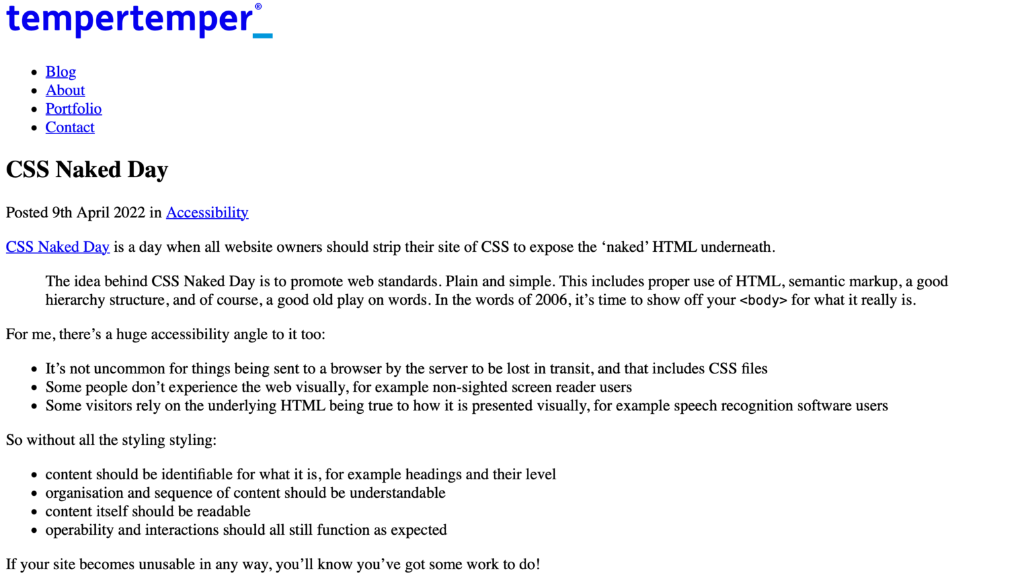CSS Naked Day
First posted 9th April 2022 in Accessibility; updated 9th April 2022
CSS Naked Day is a day when all website owners should strip their site of CSS to expose the ‘naked’ HTML underneath.
The idea behind CSS Naked Day is to promote web standards. Plain and simple. This includes proper use of HTML, semantic markup, a good hierarchy structure, and of course, a good old play on words. In the words of 2006, it’s time to show off your
<body>for what it really is.
For me, there’s a huge accessibility angle to it too:
- It’s not uncommon for things being sent to a browser by the server to be lost in transit, and that includes CSS files
- Some people don’t experience the web visually, for example non-sighted screen reader users
- Some visitors rely on the underlying HTML being true to how it is presented visually, for example speech recognition software users
So without all the styling styling:
- content should be identifiable for what it is, for example headings and their level
- organisation and sequence of content should be understandable
- content itself should be readable
- operability and interactions should all still function as expected
If your site becomes unusable in any way, you’ll know you’ve got some work to do!
Update: here’s how this post looked on CSS Naked Day:
